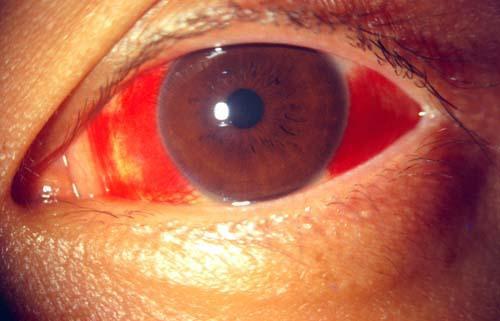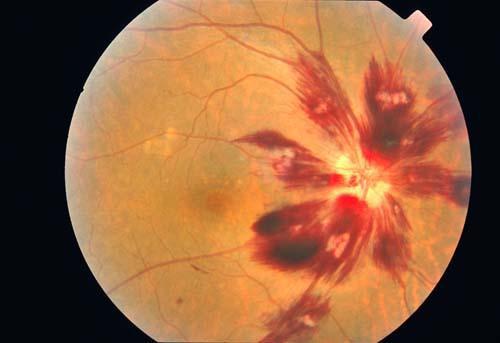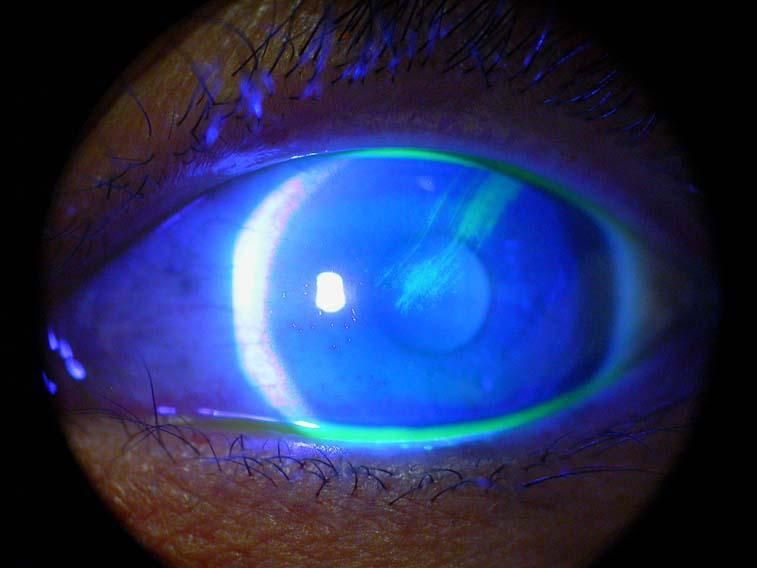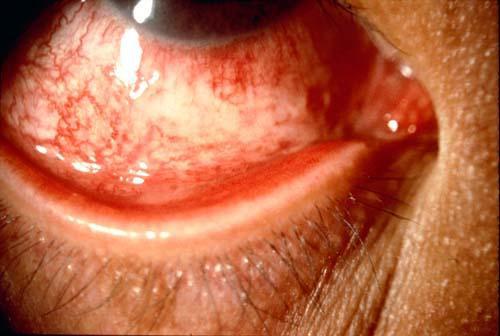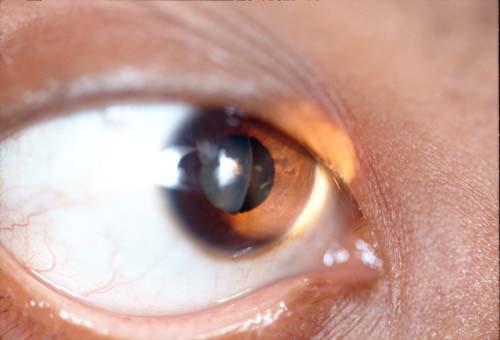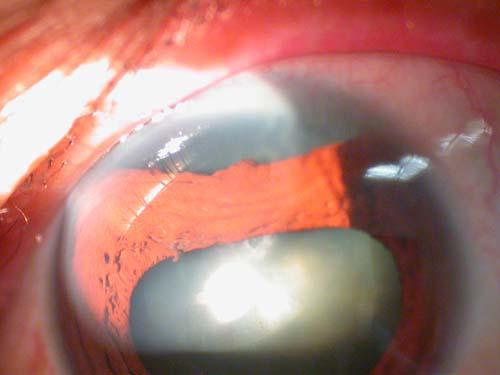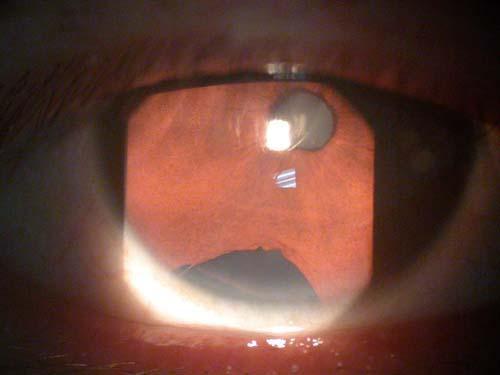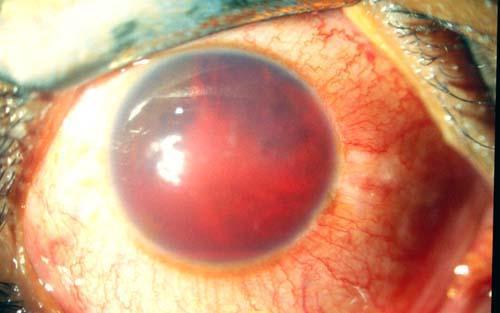Eye Trauma
Trauma to the front of the eye can take several forms, and range from mild to severe. Common injuries to the eye include minor scratches to the cornea, chemical splashes, and penetrating trauma such as with a wire nail.
Injuries to only the surface of the eye such as minor abrasions and in mild chemical injuries heal rapidly, and leave no permanent damage. When examined by the eye doctor, abrasions stain bright yellow-green when a special fluorescent dye is used and illuminated with blue light. Typically, such abrasions heal within 24 hours, but can be extremely painful with prominent discomfort and tearing. The patient is typically unable to keep the eye open. After ensuring that no serious injury or foreign body is present, the eye is usually padded for about 24 hours for patient comfort and to allow healing.
Chemical injuries are common from household solutions such as bleach, thinner and battery acid. These injuries are very painful, as anyone who has had soap or shampoo in the eye can attest. The most serious chemical injuries are encountered with alkaline chemicals such as bleach. In more serious cases, this can permanently damage the surface of the eye, and result in permanent scarring of the cornea. Immediately after injury, there can be blanching and loss of blood vessels on the eye surface. The immediate first aid for such a case is to wash the eye with cool water under a running tap for about 5-10 minutes. A showerhead is useful for irrigating the eye in such situations. The casualty can then be taken to see the eye doctor or eye surgeon right away.
Blunt trauma to the eye can cause bleeding to take place under the transparent skin of the eye (the conjunctiva), which leads to a very prominent red eye. If no other injury is present this will heal quickly with no permanent damage in about 1-2 weeks.
More serious blunt injury to the eye can also cause damage to the internal structures such as the iris, lens, and retina. Lens damage can take the form of a clouding of the lens (cataract) or dislocation from its supporting ligaments. This injury commonly takes place in accidents such as a tennis ball injury, or may result from a punch to the eye. The iris may be torn from its attachment or may be torn at the pupil, leading to pupil enlargement, resulting in intolerable glare in bright light. Commonly, there is blood in the front chamber of the eye that can be seen when lit with a torch.
Sometimes household accidents can cause severe damage to the eye, and these commonly involve sharp objects such as metal wires, pencils and craft knives. If a wire or foreign body is found stuck to the eye, it should not be pulled out to prevent further injury, and help sought at any Emergency department for review by an eye specialist. Sharp injury to the eye can lead to a puncture of the eyeball, with extrusion of eye contents and require a repair in the eye clinic operating room.
Damage to the internal structures may be surgically reconstructed, or sometimes will require replacement with surgical implants. Such accidents can be prevented by the wearing of proper protective eyewear when one is working with sharp instruments or when drilling.
With proper care and skilled surgical repair, many injured eyes can be successfully repaired, and visual function restored. However, there is no better example than this that an ounce of prevention is far better than a pound of cure.
About Dr Christopher Khng
Dr. Christopher Khng, specialises in Complex Cataract and Anterior Segment Reconstruction Surgery, in particular, Iris Reconstruction and Surgery for Aniridia. His other areas of expertise include Complex Lens surgery, New Lens and Phacoemulsification technologies, Refractive surgery, Phakic IOLs (the Implantable Collamer Lens, ICL), and small-incision, topical anesthesia phacoemulsification cataract surgery.
He completed his first two years of medical undergraduate studies in Aberdeen University, Scotland (UK), finishing top in his medical class in both years. Because of cost, he completed his medical degrees of MBBS at National University of Singapore (NUS).
Dr. Khng served as Registrar, then Associate Consultant Ophthalmic Surgeon at the Singapore National Eye Centre (SNEC). Following his stint in SNEC, Dr. Khng was a Consultant at The Eye Institute, Tan Tock Seng Hospital, Singapore.

Dr Christopher Khng
MBBS, M.Med(Ophth), FRCS(Edin), AMS(Ophth 2003) Consultant Ophthalmologist

